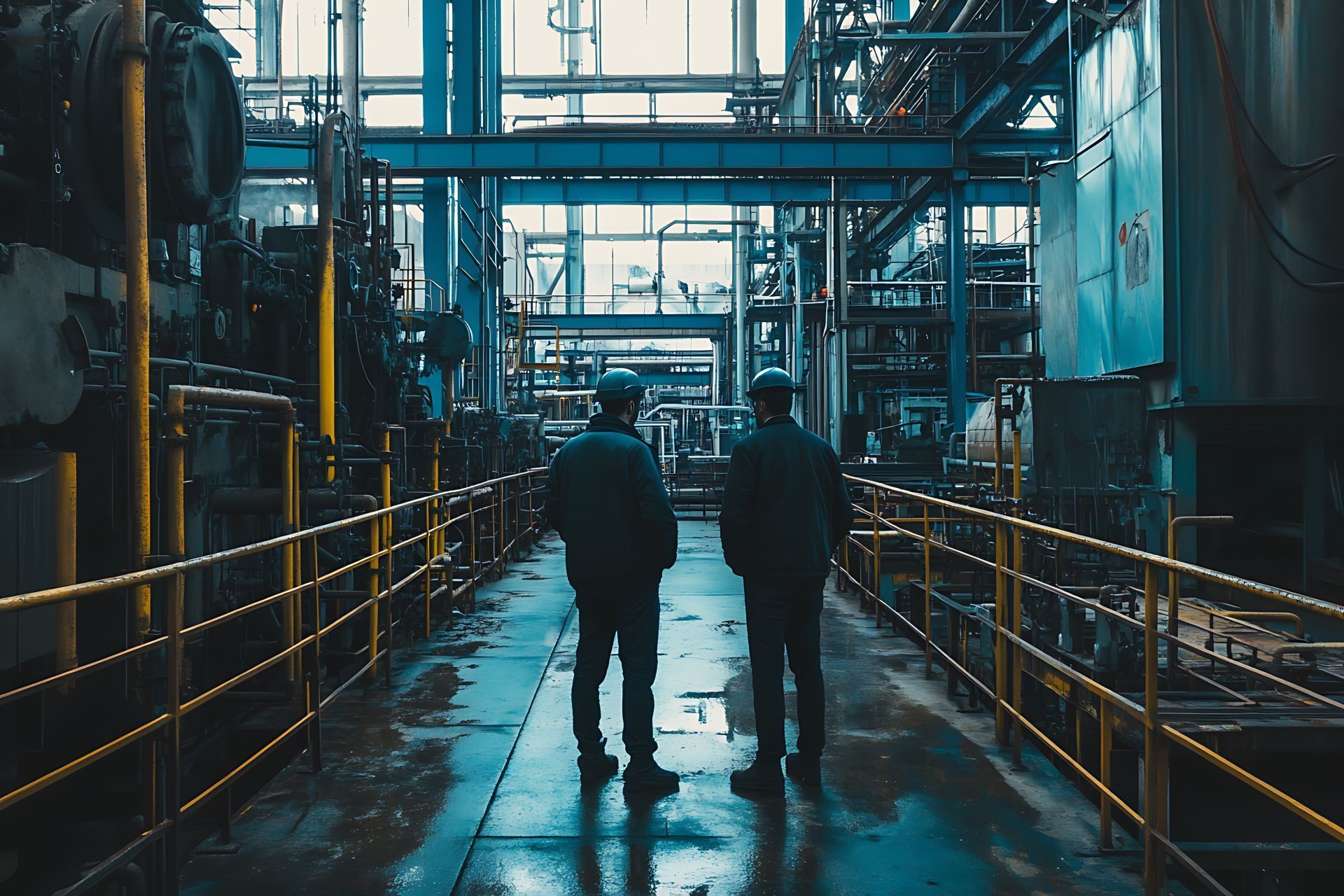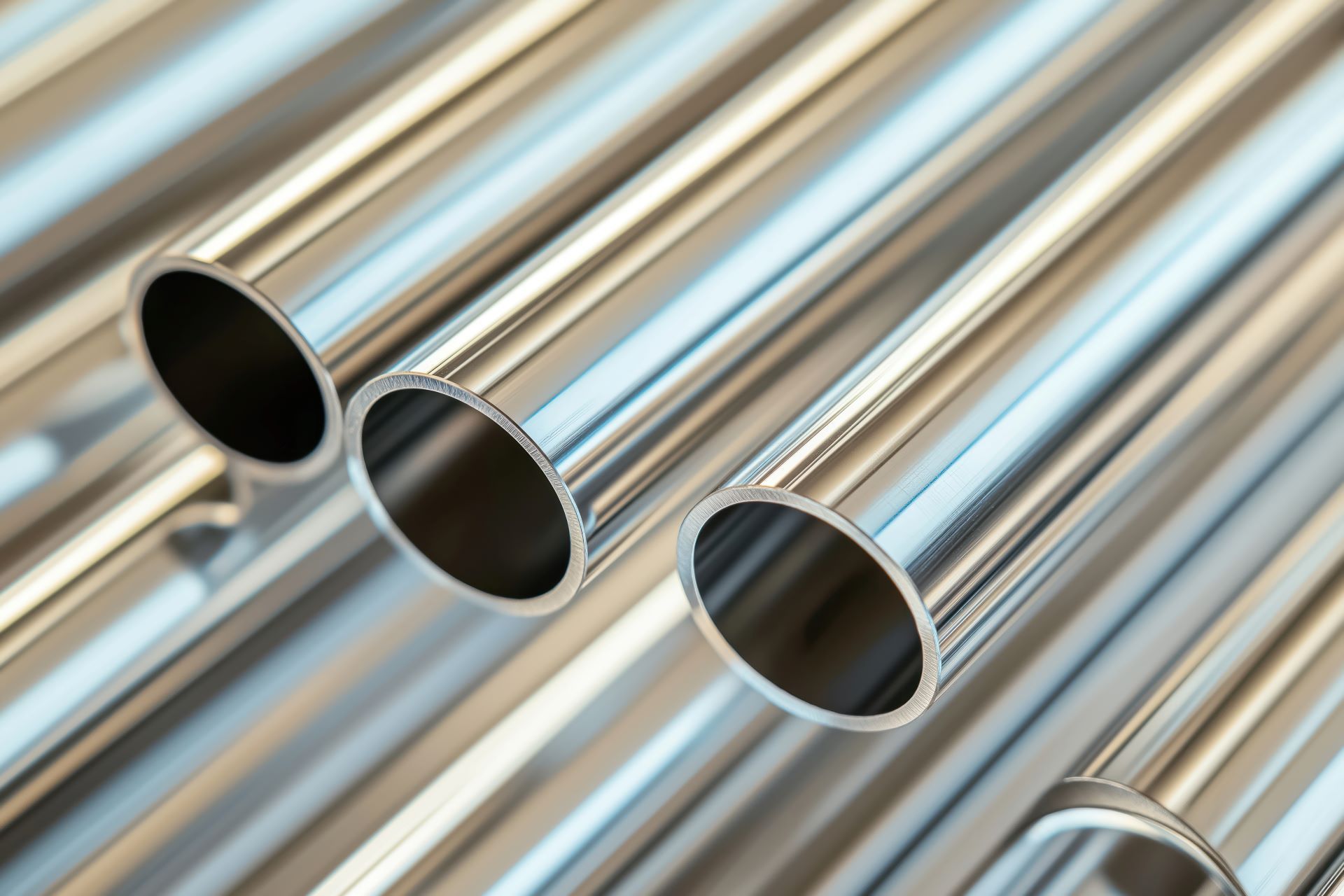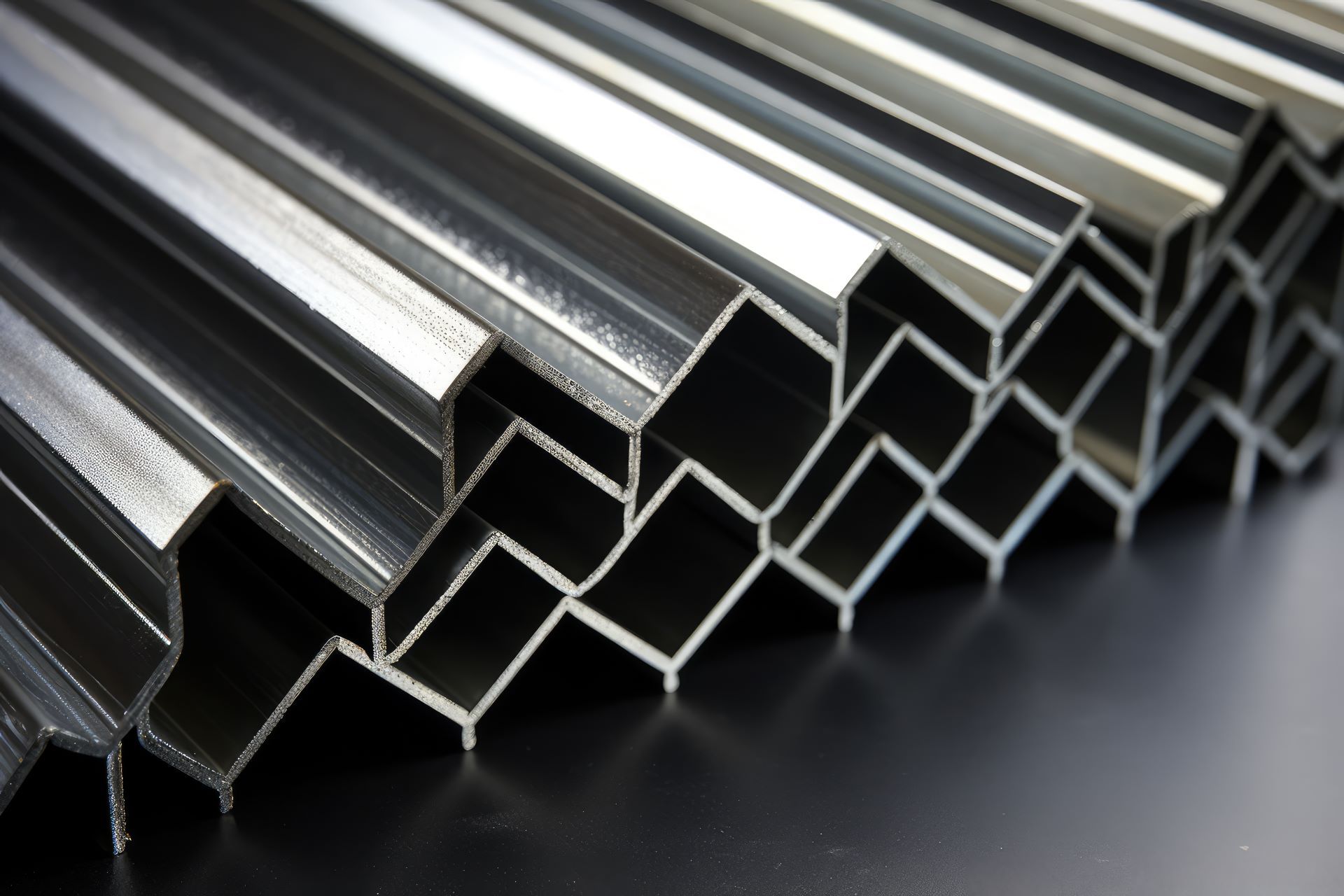Architectural-Grade Stainless Steel: Durability, Aesthetics, and Fabrication Benefits
Architects and fabricators designing for public spaces, commercial buildings, or modern infrastructure are increasingly turning to architectural-grade stainless steel. Known for its strength, polish, corrosion resistance, and design flexibility, this material supports both function and form in long-lasting architectural elements.
At Action Stainless, we supply
in-stock stainless grades and offer
in-house cutting, polishing, and fabrication support for decorative panels, railings, wall systems, elevator surrounds, and other architectural features. From design vision to final installation, the stainless material you choose and how it’s prepared directly impacts quality, visual appeal, and durability.
What Is Architectural Grade Stainless Steel?
Architectural-grade stainless refers to stainless steel that meets the appearance, surface finish, and structural expectations required in public or design exposed environments. Unlike industrial steel, architectural stainless must deliver more than performance it also supports aesthetic and tactile value.
Grades like 304, 316, and 430 are commonly used in architectural applications. These grades can be finished to a bright mirror polish, a brushed satin look, or a patterned texture depending on the visual and functional needs of the project.
While any stainless steel can technically be used in architecture, architectural grade materials are processed and finished with greater care, ensuring consistency in surface quality, flatness, and edge prep for clean installation and long-term visual integrity.
Why Stainless Steel Is Ideal for Architecture
Choosing the right material for architectural projects requires balancing form, function, budget, and longevity. Stainless steel checks these boxes through:
- Corrosion resistance, especially for exterior and high-humidity zones
- High strength-to-weight ratio, reducing bulk while maintaining support
- Wide range of surface finishes for aesthetic flexibility
- Compatibility with glass, stone, and wood in multi-material assemblies
- Ease of fabrication, including forming, welding, and polishing
Stainless also meets the hygiene, fire resistance, and durability standards required in building codes, making it a reliable material for both public and private projects.
Grades and Finishes for Architectural Use
The most popular architectural stainless grades are 304, 316, and 430, each offering unique advantages for different environments.
| Grade | Corrosion Resistance | Formability | Finish Compatibility | Typical Use |
|---|---|---|---|---|
| 304 | Good general resistance to chemicals, steam, and washdowns | High ductility and weldability | Tanks, chutes, conveyors, platforms | Panels, trim, handrails |
| 316 | Molybdenum-added for enhanced resistance to chlorides and oxidizing agents | Higher strength than 304 | Bleaching equipment, piping systems | Exterior facades, coastal installs |
| 430 | Good (interior use) | Good | Bright annealed, satin | Appliances, wall panels, elevator interiors |
Grades like 304 and 316 are chosen for high-end applications requiring corrosion protection and polish. 430 is used in less corrosive environments or where budget and appearance need to be balanced.
Common Finishes
- No. 4 Brushed Finish: Popular for railings and surfaces that must resist fingerprints.
- BA (Bright Annealed): High reflectivity with a smooth finish for interior wall systems.
- Mirror No. 8: True reflective surface for decorative and luxury applications.
- Embossed or Textured: Adds tactile variation while hiding minor scratches in public installations.
At Action Stainless, these finishes are available in sheet and plate, with in-house polishing and cutting to meet exact size, finish, and edge requirements.
Design Applications: From Function to Statement
Stainless steel is one of the few materials that blends seamlessly into both structural and artistic roles. In architectural design, it supports:
- Cladding and facades for commercial and institutional buildings
- Interior wall systems in transit hubs, stadiums, and corporate lobbies
- Elevator door panels and trim
- Handrails, guardrails, and support posts
- Furniture and signage elements
- Decorative ceilings and lighting reflectors
The ability to maintain visual consistency across components with matched finishes, welded seams, and clean edges makes stainless steel a favorite for architects seeking both elegance and performance.
Fabrication Benefits: Formable and Finishable
Unlike materials that require heavy post-processing or specialty tools, stainless steel can be:
- Laser or plasma cut for precise geometries
- Formed or bent without cracking (especially 304)
- Polished to custom sheen levels
- TIG welded or spot welded for clean joints
- Etched or bead blasted for custom textures or branding
At Action Stainless, our in-house capabilities support
full customization and
preparation so panels, rails, or trims arrive job-site ready with
no need for third-party finishing or cutting.This also reduces project timelines, ensures quality control, and allows better coordination with architectural specs and installation schedules.
Why 316 Stainless Is Preferred in Coastal or Outdoor Settings
While 304 is used in most architectural interior environments, 316 stainless is the material of choice in coastal cities, outdoor walkways, or fountains and water feature areas. Its molybdenum content offers additional resistance to chlorides and salt spray.
316 is often specified for:
- Exterior stairways and handrails
- Cladding on ocean-facing structures
- Public fountains and decorative water features
- Transit station panels exposed to road salts or deicing chemicals
Our team can advise when 316 is preferred and ensure it’s cut and finished to spec using in-house services helping minimize risk of corrosion over time.
Precision Matters: Flatness and Tolerances
Architectural sheet and plate require consistent flatness, edge quality, and dimension especially for applications involving:
- Framed panel systems
- Seamless wall or ceiling installations
- Reflective finishes (which highlight distortion)
- Modular or prefabricated panel assemblies
We support this with:
- Precision shearing for clean edges
- Saw cutting for thicker plate applications
- Flat-bar trimming for trim and edge covers
- Finish-matching for multi-panel systems
Material prep directly affects ease of installation and reduces finishing labor on-site.
Stainless in LEED and Sustainable Design
Stainless steel contributes to LEED certifications and sustainable building goals. It is:
- 100% recyclable without degradation
- Frequently composed of recycled content (up to 60%)
- Non-toxic and low-maintenance
- Compatible with other low-emission materials
For architects focused on durability and long-term building value, stainless represents a future-proof material resistant to weathering, UV degradation, and surface corrosion even after decades of use.
Action Stainless helps clients select material that supports both visual and sustainability goals, backed by certifications and traceability documentation where required.
Supporting Design-Build Teams and Fabricators
Stainless steel may be chosen by the architect, but it's the fabricator and installer who bring it to life. That’s why our model is built around supporting the full design-build chain.
We offer:
- In-stock architectural stainless in polished, brushed, and pattern finishes
- In-house cutting, shearing, and polishing for custom projects
- Sizing and edge prep for handrails, panels, and facade systems
- Responsive quoting and fulfillment for bid deadlines or short-turn projects
- Local service with national inventory reach
We don’t outsource finishing or rely on external cutting centers everything is done in-house to ensure consistent results and faster lead times.
Conclusion: Stainless Steel That Looks as Good as It Performs
Architectural stainless steel offers unmatched value in projects where strength, hygiene, and visual appeal intersect. Whether it's cladding a building, lining an elevator, or creating a decorative wall system, the right grade and finish make all the difference.
At Action Stainless, we support architects, fabricators, and designers with cut-to-spec stainless in the grades, finishes, and sizes needed for standout results. With in-house services and national reach, we help move your vision from CAD file to installed reality on time and on spec.






